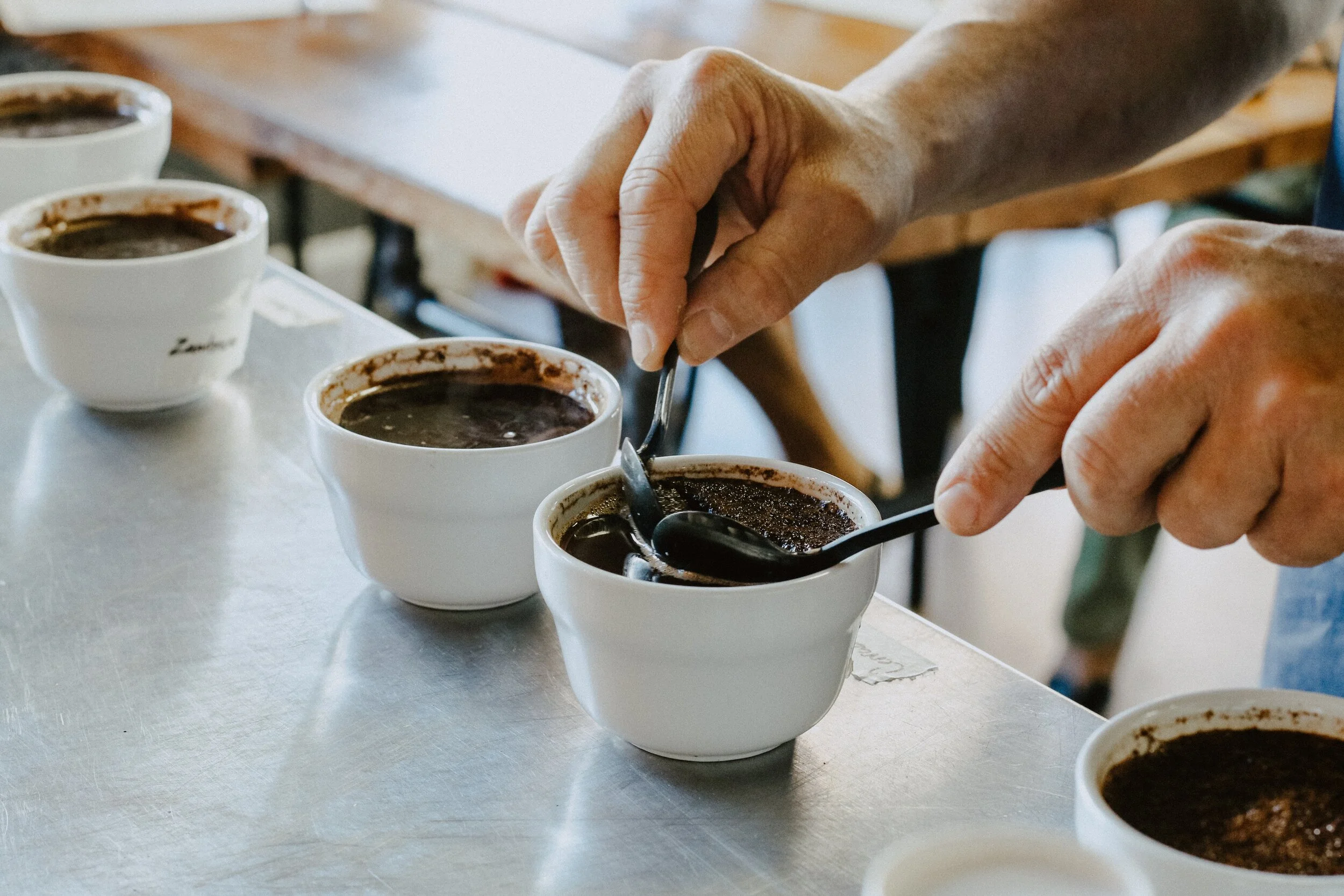
Roasting + Tasting
Our Roasting Profile
While roasting coffee in a large commercial company is simply science, specialty roasters use both art and science to achieve the ultimate roast. Specialty coffee is roasted in small batches.
Just about any coffee shop that roasts coffee will have a variety of roasted beans. If you find yourself wondering what the hell is the difference between "House Blend" and "Espresso Blend" beans is, it's all in the roast. Here are some common names you'll find:
Light/Cinnamon Roast
These have been roasted very little. They'll produce an acidic, highly caffeinated coffee. It will be quite bitter. Contrary to the name, it does not contain cinnamon -- but the color is similar. You may not find this anywhere other than in North American.
House/Medium/American Roast
This is simply a medium roast that any coffee shop in America will use for all their drip coffee. The cheap stuff (Yuban, Folgers, etc.) is often a medium roast.
City / Medium Roast
Darker roasts have less caffeine, and are less bitter and acidic. You'll notice that they're often sweeter.
Dark/ Full City Roast
This tends to be even darker than a city roast. The beans should look very dark brown with spots of oil. Espresso blends tend to be roasted this dark, in order to decrease the acidity and increase body.
Full city plus
The darker side of a Full City roast is Full City +, where the coffee has just barely entered 2nd crack. A few snaps are heard and then the roast is stopped. 2nd crack may continue into the cooling phase – this is called “coasting”.
Vienna roast
The Vienna stage (also called Continental) to Light French stage is where you begin to find origin character eclipsed by roast character. A dark or heavy roast is at odds with buying coffee for its distinct origin qualities. Dark roast coffees tend to taste more like each other – as the differences due to distinct origins are obscured by the carbon-y roast flavors. Nonetheless, some coffees are excellent at this stage
French Roast/Very Dark Roast
This is the darkest roast, with the coffee beans resembling charcoal and covered with an oily sheen.

Coffee Tasting
Know 5 Key Attributes
The following terms are commonly used for tasting and describing coffees.
Acidity
Coffees with low acidity are soft and smooth. High acidity coffees have a bright, crisp, palette-cleansing quality. Examples of acidity ranges of various coffees are:
Low (Sumatra, Celebes, India)
Medium (Colombian, Panama, Mexico, Nicaragua)
High (Kenya, Costa Rica, Papua New Guinea, Guatemala, Ethiopia)
Aroma
Aroma refers to the fragrance or odor of brewed coffee combined with its flavor. The aroma of brewed coffee may be:
Lacking or faint
Delicate
Strong
Fragrant (i.e., aromatic)
Body
Body refers to the sense of the coffee's weight and texture (e.g., its oiliness and intensity) in the mouth. The brewing method also influences the body as a plunger pot or espresso machine will produce a heavier bodied coffee, while a conventional drip machine will result in lighter bodied coffees because the paper filters remove flavor oils. A coffee's body can be:
Light-bodied (African)
Medium-bodied (American)
Heavy-bodied (Indonesian)
Flavor
Flavor refers to a coffee's intensity, the combined impression of a coffee's aroma, acidity, and body. Specific taste flavors may suggest spices, chocolate, nuts, or even uncomplimentary flavors like straw, grass, or rubber. Coffee flavors are categorized as:
Poor
Fair
Good
Fine
Finish
Finish refers to the aftertaste, the feelings and flavors that are perceived after the coffee has been swallowed. Terms used to describe a coffee's finish include:
Length of the finish (quick, lingering)
Clean aftertaste

